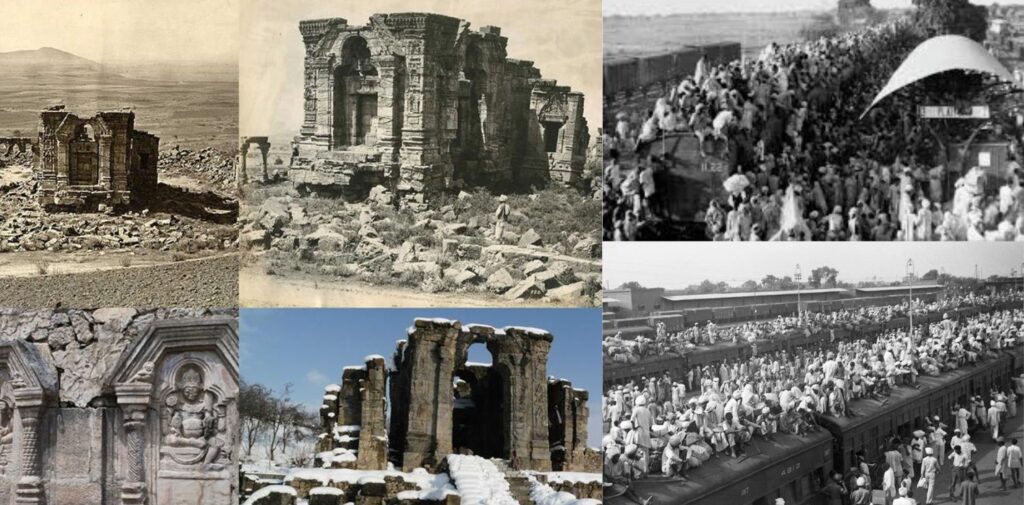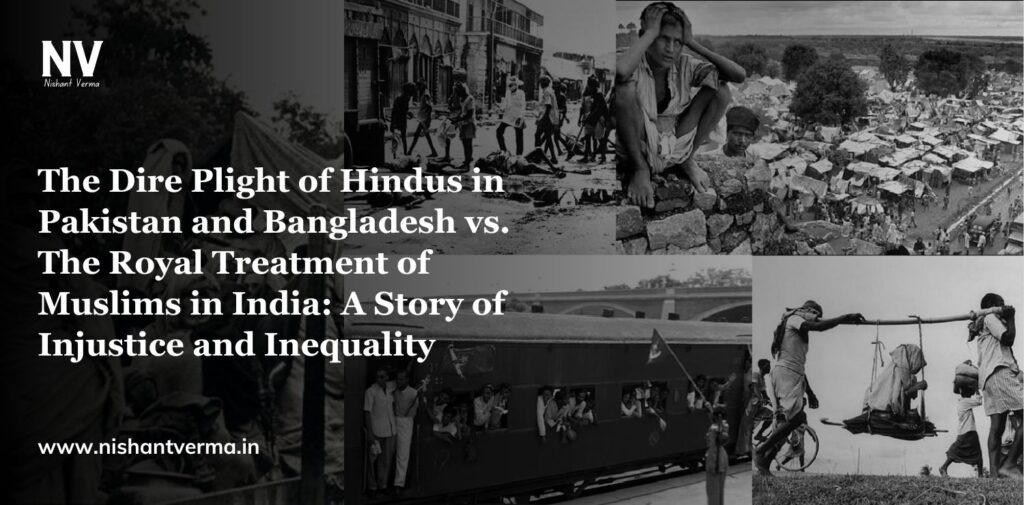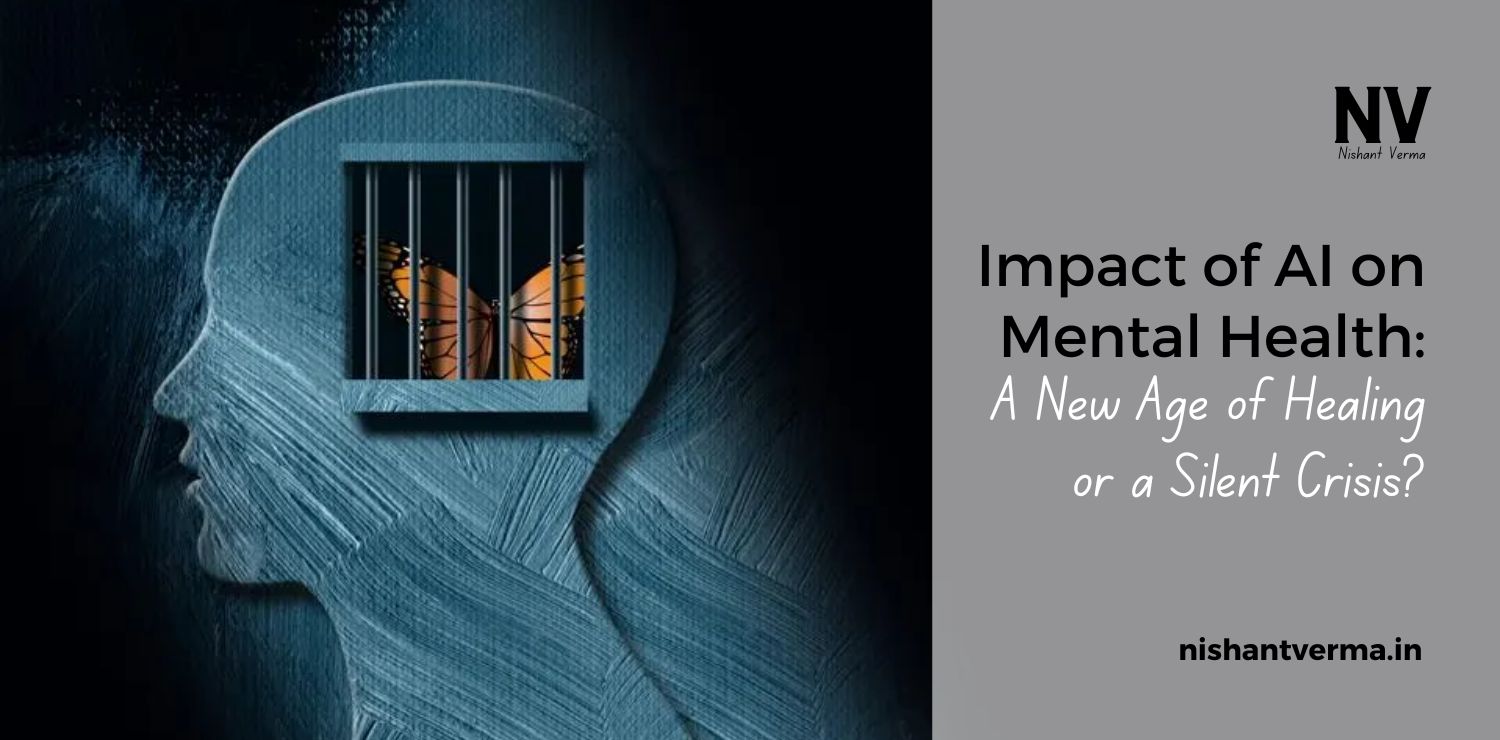The condition of Hindus in Pakistan and Bangladesh is a grim reminder of the vulnerability of minorities in countries where religious intolerance is pervasive. In contrast, Muslims in India enjoy privileges and opportunities that reflect the nation’s commitment to secularism and equality, despite facing certain challenges. This stark difference is the result of a historical and political narrative shaped by leaders like Gandhi and the Nehru family, whose policies weakened the position of Hindus and set the stage for the current scenario.
Hindus in Pakistan: A Community Under Siege
Hindus in Pakistan represent a minuscule percentage of the population—around 1.2%, mostly residing in the rural regions of Sindh and Baluchistan. Their situation is dire, to say the least. Historically, Hindus were a significant part of Sindh’s demographic landscape, but the violence and genocide during the partition of India in 1947 led to a massive exodus. Those who stayed behind faced systemic discrimination, marginalization, and violence. Post-Partition, the rise of religious extremism further exacerbated their plight. The constitutional amendments introduced by General Zia-ul-Haq and subsequent regimes only made things worse, pushing Hindus further to the fringes of society.
The Hindu community in Pakistan faces restrictions in accessing basic rights, including education, employment, and political representation. Their presence in government, judiciary, and armed forces is nearly non-existent. Discrimination is rampant, and they are often treated as second-class citizens. The community has suffered numerous attacks on their places of worship. In the aftermath of the Babri Masjid demolition in India, over 120 Hindu temples were destroyed across Pakistan within a week.
Apart from religious persecution, forced conversions and abductions are prevalent. Numerous cases of Hindu women being kidnapped, raped, and forcibly converted to Islam have been reported, but the authorities turn a blind eye to these injustices. The Hindu families that do survive are often landless bonded laborers, working under the mercy of powerful landlords who exploit them like slaves. Many Hindus continue to live in fear, seeking refuge across the border in India whenever possible.

Bangladesh: A Bleak Picture of Systematic Discrimination
In Bangladesh, the Hindu minority faces similar challenges. Once making up nearly 30% of the population at the time of Partition, the Hindu population in Bangladesh has dwindled to less than 8%. This decline is attributed to decades of discrimination, forced conversions, land grabbing, and systemic violence. The situation worsened with the rise of radical Islamic groups, especially after the fall of the Awami League’s Sheikh Hasina government, which was seen as a protector of minority rights.
The Hindu community is often a target of mob violence, property destruction, and killings, especially during political turmoil. The infamous Noakhali riots of 1946, the genocide during the Bangladesh Liberation War in 1971, and more recent attacks on Durga Puja pandals and temples highlight the deep-seated hatred against Hindus in the region. Moreover, Hindu women continue to be the primary victims of targeted violence, including rapes and abductions, making the community feel perpetually insecure and vulnerable.
India: A Nation of Contrasts for Its Minorities
In contrast, Muslims in India, despite facing communal tensions and socio-economic challenges, have constitutional protections and access to opportunities that are denied to Hindus in Pakistan and Bangladesh. India’s secular constitution ensures equal rights for all its citizens, irrespective of religion, and the government has implemented several affirmative actions to uplift Muslims. From reservations in educational institutions to specialized schemes aimed at socio-economic development, Muslims in India have access to resources and representation that is unimaginable for Hindus in Pakistan and Bangladesh.
Moreover, political leaders like Gandhi and Nehru, hailed as icons of secularism, arguably laid the foundation for policies that compromised the interests of Hindus in the subcontinent. The Partition, which was meant to create a safe haven for Muslims in Pakistan, left Hindus in those regions stranded, vulnerable, and subject to the whims of Islamic majoritarianism. Meanwhile, in India, Nehru’s policies favored the Muslim community in a bid to maintain a secular image, often at the expense of Hindu sentiments.

Gandhi and Nehru: The Real Culprits?
Mahatma Gandhi’s stance during the Partition and his appeasement of Muslims, even in the face of atrocities against Hindus, is often criticized as a major failure. His insistence on paying Pakistan 55 crore rupees, despite the violence and exodus faced by Hindus, is seen as a betrayal by many. Nehru’s continuation of these policies further solidified the perception that the Congress leadership was willing to sacrifice Hindu interests for political gains. The Nehru family’s policies, from promoting Urdu as a language to suppressing Hindu nationalist movements, further alienated the community. This perception has only strengthened over the decades, as successive Congress governments continued to cater to minority appeasement, fostering resentment among the Hindu majority.
A Stark Reality Check: Hindus Treated as Second-Class Citizens
The harsh reality is that Hindus in Pakistan and Bangladesh live in constant fear and uncertainty. They are often deprived of their fundamental rights, subjected to systemic oppression, and treated as scapegoats for the failures of the state. Their socio-economic condition is deplorable, and they have no recourse to justice in an environment that is hostile to their very existence. This is in sharp contrast to the narrative peddled by some in India, which portrays Muslims as being marginalized and persecuted. The truth is, while Muslims in India may face certain issues, they are not even remotely comparable to the plight of Hindus in Pakistan and Bangladesh.
The historical missteps of Gandhi and the Nehru family have had long-lasting repercussions. They left the Hindu community in Pakistan and Bangladesh to fend for themselves in hostile environments, while simultaneously creating a system in India that disproportionately favors minorities. This has led to an imbalance where Hindus in India feel marginalized despite being the majority, and the Hindus across the border continue to suffer unimaginable hardships.
Conclusion: A Call for Awareness and Action
The international community needs to acknowledge and address the persecution of Hindus in Pakistan and Bangladesh. This situation is not merely a political issue but a humanitarian crisis that demands immediate attention. As for India, it’s time to reassess policies that undermine the majority community’s interests and ensure that justice and equality are truly upheld for all citizens. The time has come to question the legacy of leaders like Gandhi and Nehru, who, in their attempt to promote secularism, inadvertently weakened the foundations of India and left Hindus across the border in a perpetual state of insecurity.
Understanding this narrative is crucial not just for historical accuracy but also for shaping future policies that safeguard the rights and dignity of all communities, regardless of their religious affiliation.




